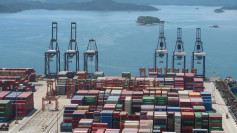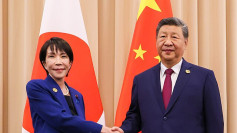On the outskirts of Peru's coastal desert, a once-quiet fishing village is on the brink of transformation as the Chancay megaport project takes shape. The $1.3 billion deep-water port, primarily funded and constructed by Chinese shipping giant Cosco, is set to become a critical node in global trade. Yet, while Chinese President Xi Jinping and Peruvian President Dina Boluarte herald its strategic importance during this week's Asia-Pacific Economic Cooperation (APEC) summit, local residents remain deeply skeptical.
The Chancay project, designed to connect South America's exports with Asian markets, represents one of Beijing's most ambitious infrastructure ventures in Latin America. Once completed, it will boast 15 quays and a sprawling industrial park, with more than $3.5 billion in additional investment anticipated over the next decade. "Chancay... will revolutionize trade and dynamize the Asia-Pacific economy," President Boluarte declared at the APEC CEO Summit.
However, many of Chancay's 60,000 residents see the development differently. Fishermen, whose livelihoods depend on the local waters, claim that port dredging has devastated fish habitats, leading to smaller and less frequent catches. "Our fishing spots no longer exist here. They destroyed them," lamented 78-year-old fisherman Julius Caesar, gesturing toward the towering cranes. "I don't blame the Chinese for trying to mine this place for all it's worth. I blame our government for not protecting us."
Rafael ávila, a 28-year-old fisherman, described the hardship of increasingly fruitless days at sea. "I've been out in the water all day and I'm always needing to venture farther," he said, his small boat inadequate for the longer trips now required. To supplement his income, ávila has started offering rides to tourists seeking views of the massive Chinese vessels dominating the horizon.
Residents are also bracing for environmental risks. The specter of pollution and potential oil spills looms large. Memories are still fresh of a 2022 oil spill at the nearby La Pampilla refinery, which wreaked havoc on Peru's biodiverse coastline. "This port is a monster that's come here to screw us," said Rosa Collantes, a 40-year-old local who earns a living cleaning fish on the shore.
Mario de las Casas, a Cosco manager for the Chancay project, acknowledged the contrast between the modern port infrastructure and the surrounding village's poverty. "You cannot build a state-of-the-art port and have a city next to it that has no drinking water, no sewage, a collapsing hospital and no educational centers," he said, stressing Cosco's intent to study ways to foster local economic development.
For China, Chancay is a vital link in its broader ambitions across Latin America. President Xi described it as "a prosperous path to promoting the joint development of China-Peru, and China-Latin America," in an op-ed published in El Peruano. But some in Washington view the project with concern. General Laura Richardson, former head of the U.S. Southern Command, recently warned of the port's potential use for Chinese military and intelligence operations. China's state-run Global Times dismissed these claims as baseless "smears."
Beyond its geopolitical implications, Chancay is a reflection of shifting trade dynamics. China has surpassed the U.S. as the primary trading partner for many Latin American countries, including Peru. Xi's visit, accompanied by over 100 Chinese business leaders, underscores Beijing's determination to cement its foothold. Cosco's collaboration with local entities, as well as significant investments by Chinese mining firms like Chinalco, further entrench China's influence.
Yet, despite its scale and promise, Chancay's success will hinge on balancing global ambitions with local needs-a balance that remains elusive to many of the village's residents. "People come to the port and they say 'Wow, tremendous!' but they don't see the reality," Collantes noted, her voice tinged with frustration.






